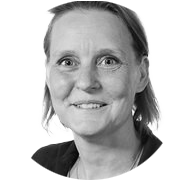


December 2024, no. 142
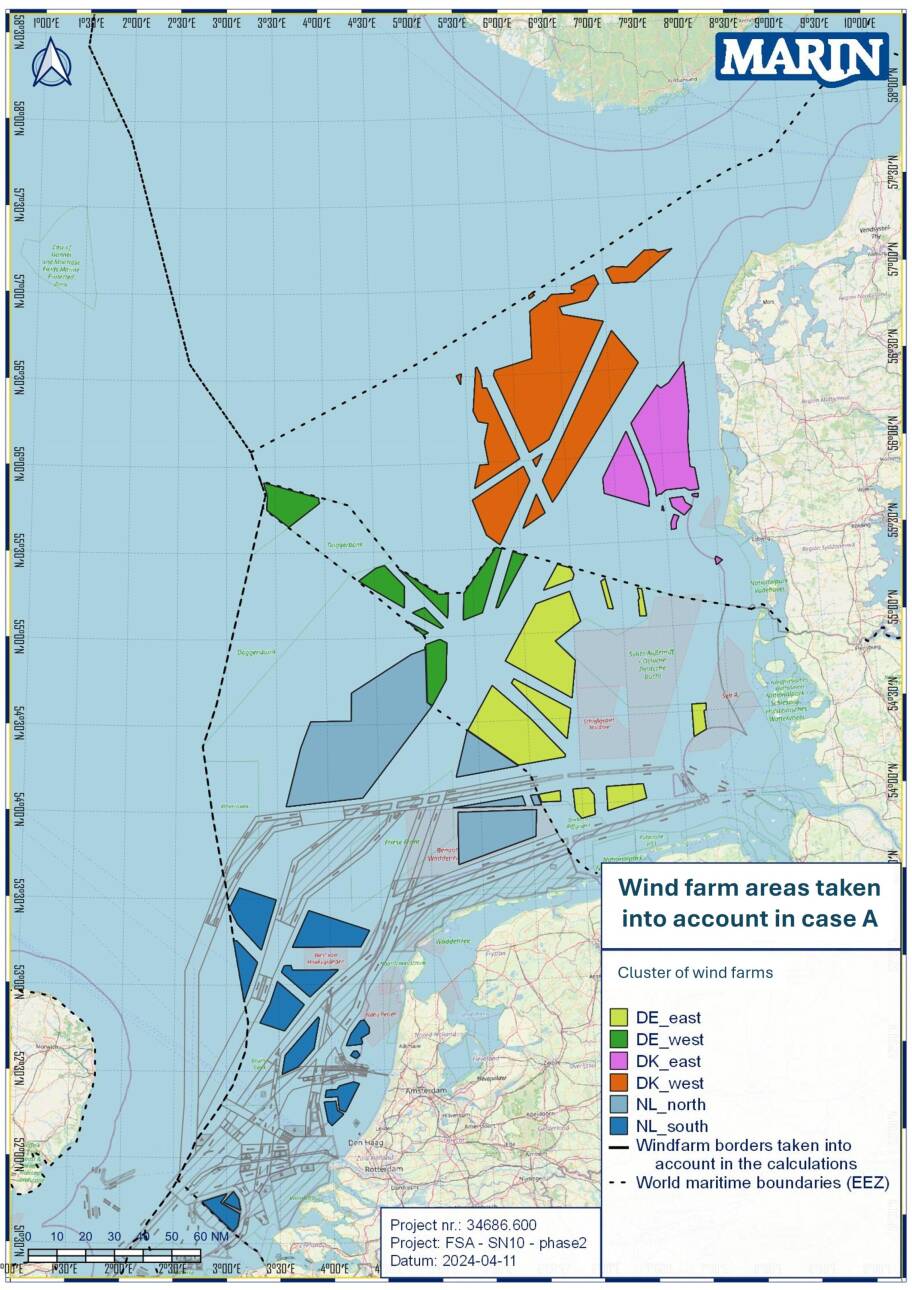
Location of the SN10 route (layout wind farms for Case A).
Interested? Contact us to discuss your options
Create a MARIN account to stay updated

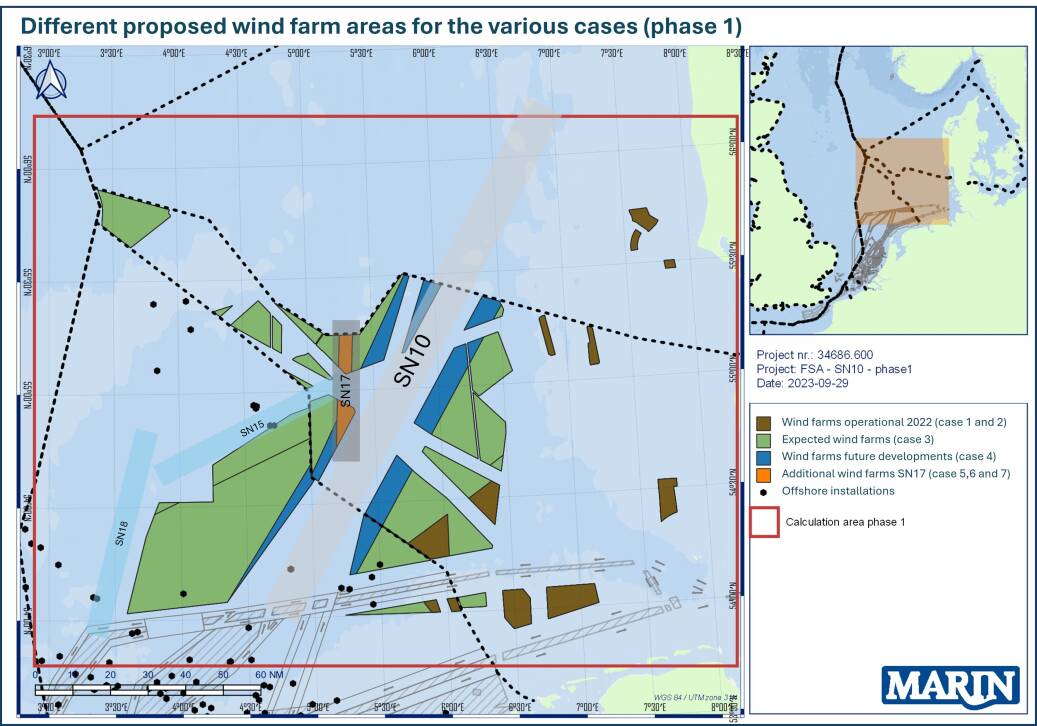
Offshore wind energy has become a crucial element in the global transition to sustainable energy, and the North Sea, with its consistent and strong wind resources, is considered a prime location for the expansion of wind farms.
Phase II (End of 2023 and 2024): This phase expanded the scope to assess the broader effects of wind farm configurations on shipping safety throughout the wider North Sea. It aimed to understand the overall impact of different offshore wind farm configurations on maritime navigation, particularly in terms of risk management for shipping vessels.
However, to fully capitalise on this potential, cooperation among the countries bordering the North Sea - particularly the Netherlands, Germany and Denmark - is essential. This collaboration is needed not only to boost renewable energy generation but also to safeguard maritime safety and ensure the continued accessibility of vital international shipping routes, such as the SN10 route.




Report
Balancing offshore wind energy and
navigational safety in the North Sea
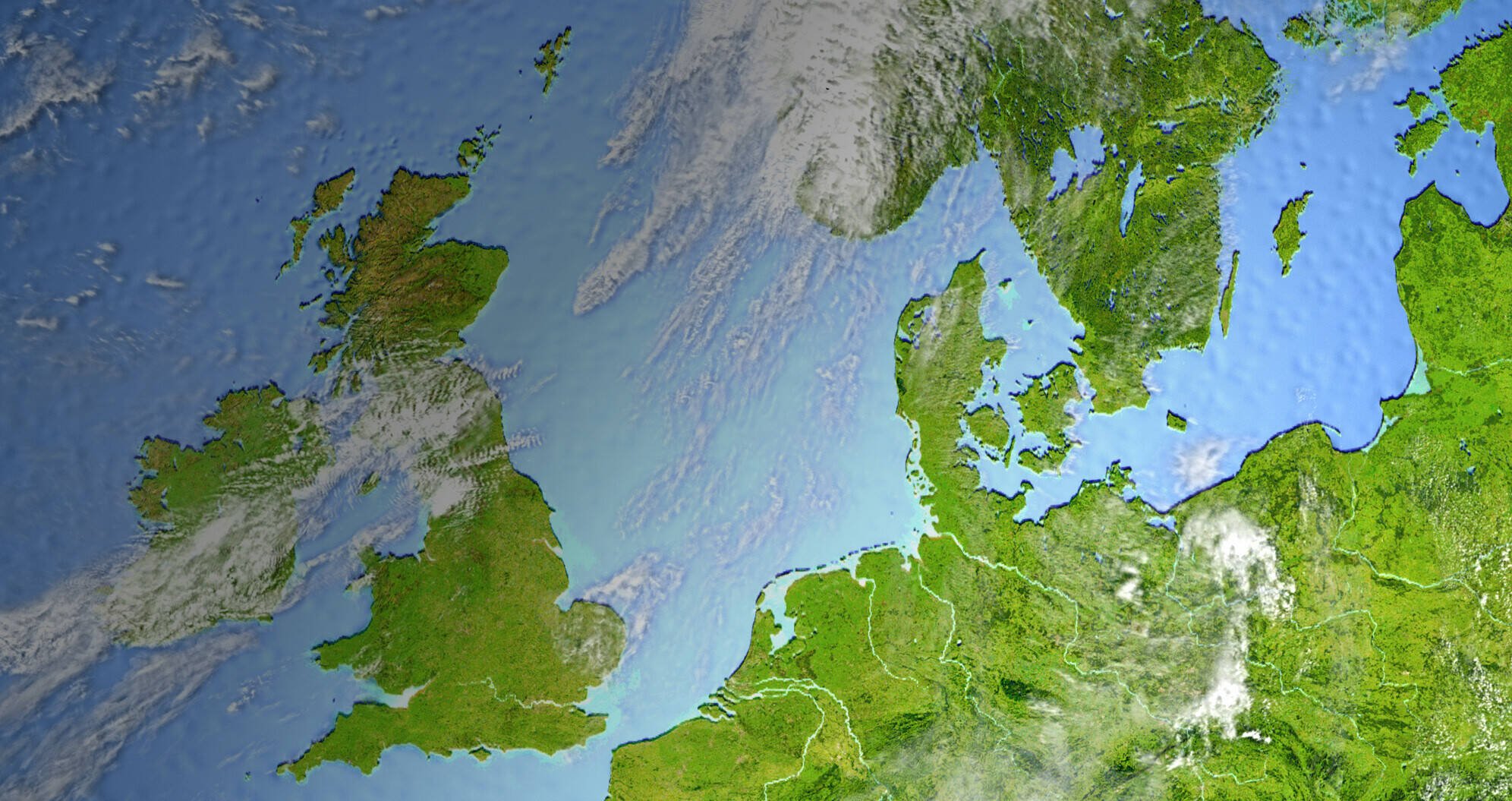
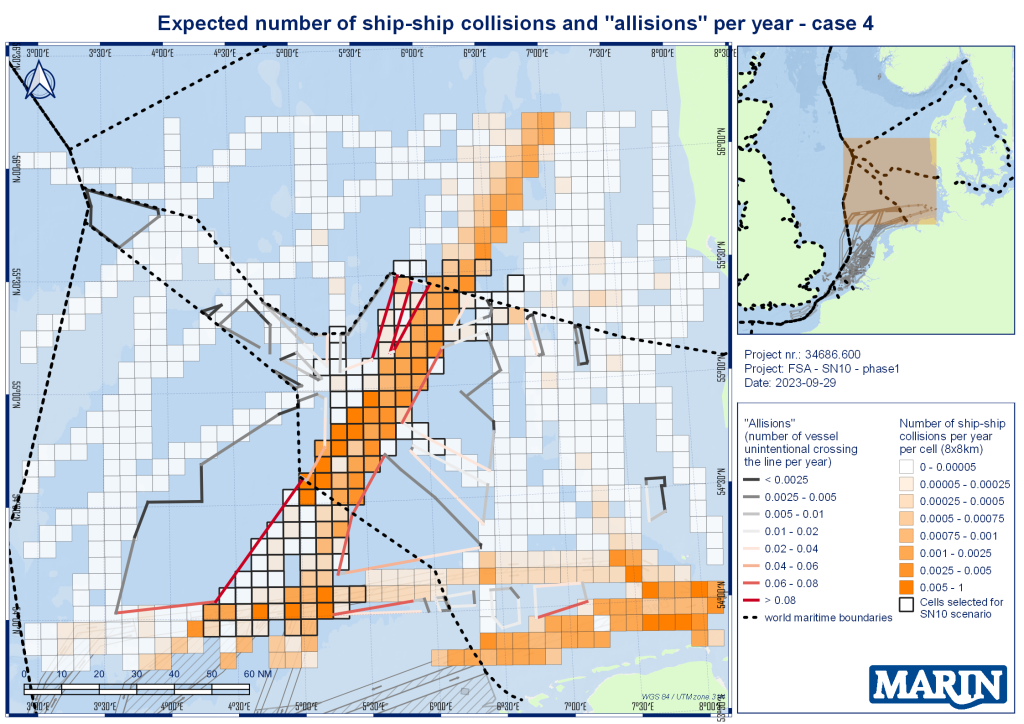
Results case 4.
Results case 3.
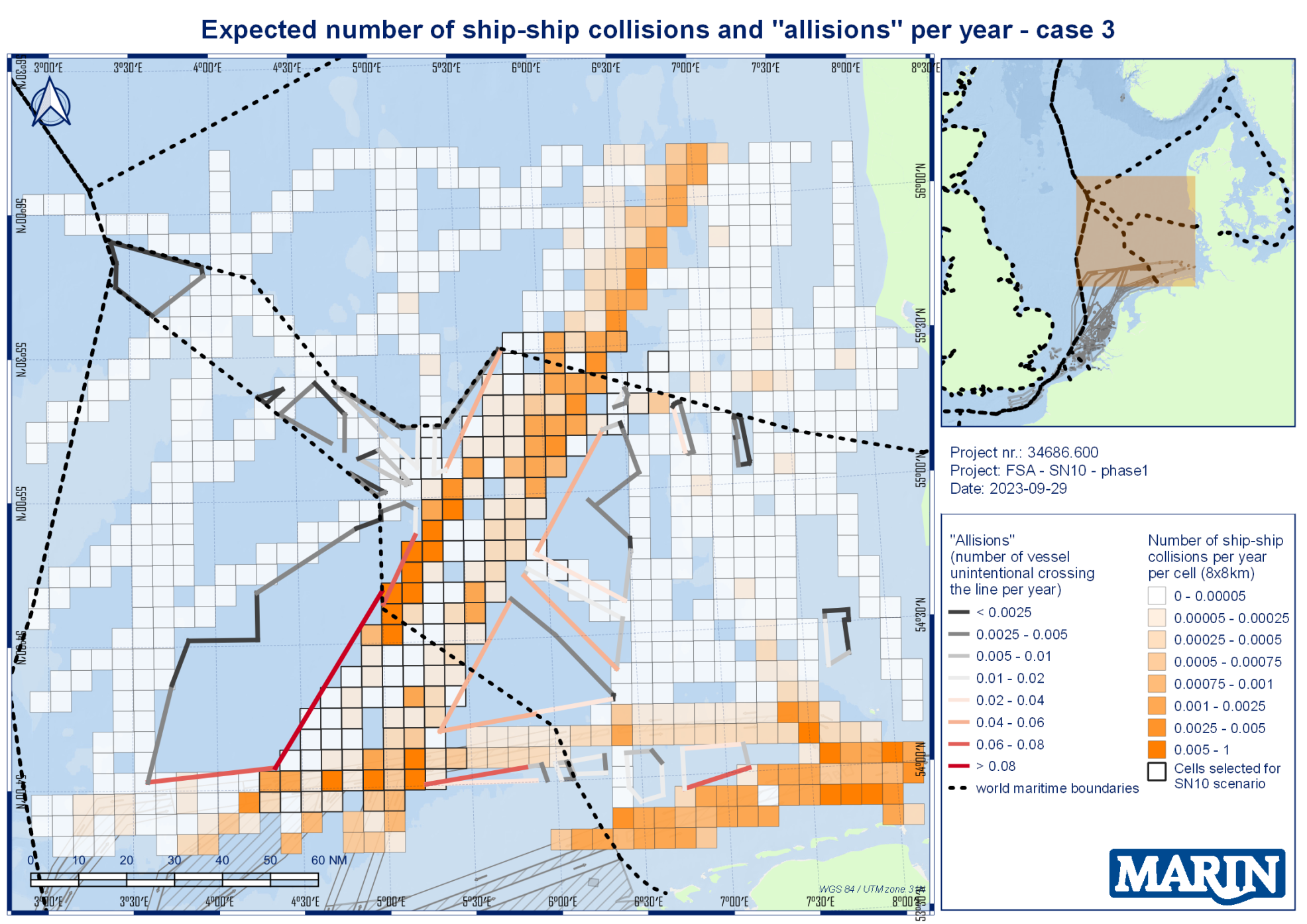
The study concluded that the introduction of offshore wind farms would increase the frequency of allisions in the region.

Need for further cooperation: The findings emphasised the necessity for continued collaboration among the North Sea countries to ensure that the expansion of offshore wind energy does not compromise maritime safety. The close cooperation between nations, along with the ongoing assessment of both quantitative and qualitative risks, is critical for successfully integrating renewable energy production with the region's maritime infrastructure.
In conclusion, the study highlights that while offshore wind energy holds significant promise for the future of sustainable energy, careful urgent planning progress and international cooperation are needed to stop accident rates increasing and to mitigate the risks, so we can ensure a balanced and secure integration of energy and trade routes in the North Sea.
By contributing to this international FSA, MARIN helped to further understand the effects of the developments on navigational safety. As well as the FSA, MARIN is involved in more in-depth, additional research together with the Ministry of I&W and RWS, on individual topics related to shipping in the North Sea. The findings and insights will help policymakers make informed decisions about the North Sea’s planning and mitigation measures that should be taken to ensure the safety of shipping.
Key findings and conclusions
Incident frequencies: The overall expected frequency of ship-ship collisions in the North Sea area, which includes the Dutch, German and Danish EEZs, was found to range between 2.5 and 2.7 collisions per year for the different scenarios evaluated. This analysis considered "route-bound" traffic, which does not include smaller vessels like fishing boats or work vessels. In addition, the expected number of “allisions” (collisions with stationary objects, such as wind turbines) was projected to range between 5.7 and 6.0 per year.
Impact of wind farms: The study concluded that the introduction of offshore wind farms would increase the frequency of allisions in the region. In 2022, some wind farms in the Dutch EEZ were already operational, and the estimated allision frequency for these wind farms was approximately 0.65 per year. With the planned expansion of wind farms across the Dutch, German and Danish EEZs, the total expected number of allisions was projected to rise by about 5 incidents annually.
Risk variability: While there were some differences between the results of the two modelling approaches (SAMSON and IWRAP), the overall pattern and relative risks across the different design cases were consistent. Both assessments showed that the difference in total risk between the various scenarios was relatively small, which suggests that no single wind farm layout (collection of different wind farms) was significantly safer than the others when looking at the overall effect on the North Sea. However, this underscored the importance of combining quantitative data with qualitative expert input to fully assess safety risks.
Qualitative Analysis: This component focused on the expert judgment and non-quantifiable aspects of the risk, such as environmental impacts and the potential consequences of accidents on ships, installations, and people. The qualitative analysis helped identify risks that were not easily measurable but were crucial for understanding the broader safety implications.
The combination of these two approaches allowed the project to capture both measurable risks and expert insights, enhancing the overall reliability of the safety assessment.
Quantitative and Qualitative Assessments
The assessment process combined two key types of analysis: quantitative and qualitative.
Quantitative Analysis: This involved modelling and the statistical evaluation of risks, including accident frequencies based on factors such as vessel density, weather conditions, and potential obstacles. MARIN used the SAMSON model, which has been in use by Dutch authorities for more than 30 years, while ABL Group used the IWRAP model, commonly applied by German authorities. Despite differences in the models' results, both models produced similar conclusions regarding the relative risks across various wind farm layout options.
The SN10 route is a critical international shipping lane that connects the southern North Sea with the Skagerrak and Baltic Sea to the north. As more offshore wind farms are developed in the region, balancing the expansion of renewable energy with the need for safe and efficient maritime transport becomes increasingly challenging. To address these challenges, the Netherlands, Germany and Denmark initiated a collaborative project to perform a Formal Safety Assessment (FSA), in accordance with International Maritime Organization (IMO) guidelines, to evaluate the impact of wind farms on the SN10 route.
Formal Safety Assessment of the SN10 shipping route
The project was divided into two main phases:
Phase I (2023): Focused on a smaller area of the SN10, specifically the German Exclusive Economic Zone (EEZ) and its connection to existing traffic separation schemes in the Dutch EEZ. The goal of this phase was to analyse how narrowing the shipping route could impact navigational safety. One key conclusion was that narrowing, or "closing" certain parts of the route could potentially disrupt maritime traffic, leading to congestion on other major shipping routes outside the SN10 area. The need for further analysis across a broader area of the North Sea was identified.
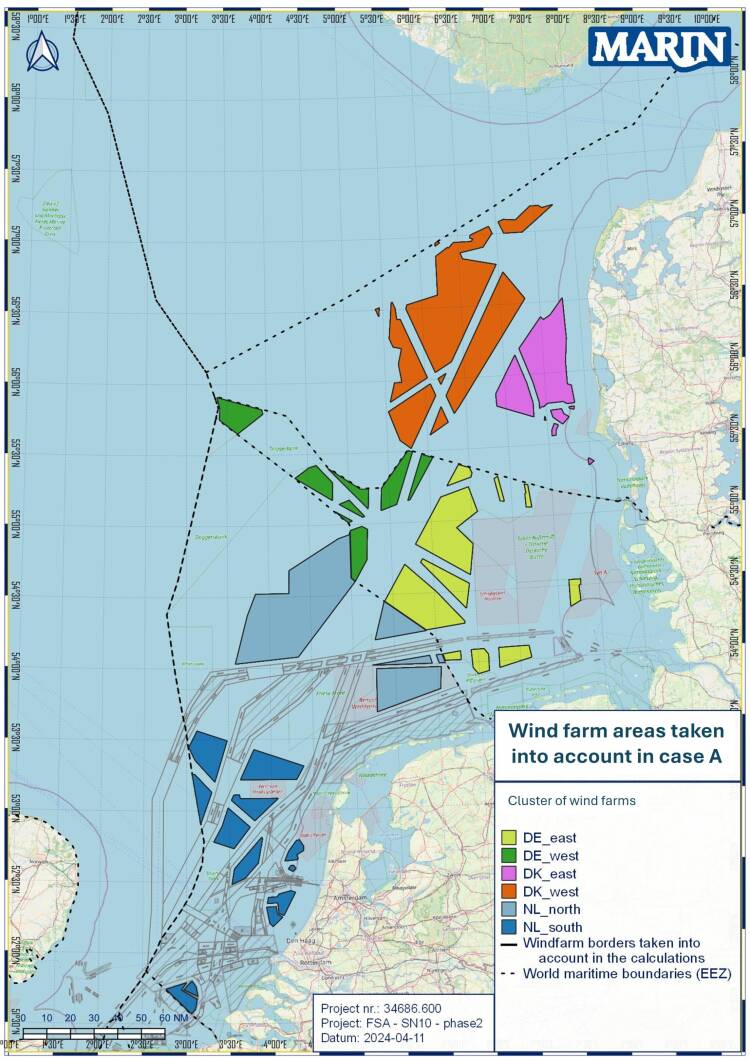
Location of the SN10 route (layout wind farms for Case A).
Need for further cooperation: The findings emphasised the necessity for continued collaboration among the North Sea countries to ensure that the expansion of offshore wind energy does not compromise maritime safety. The close cooperation between nations, along with the ongoing assessment of both quantitative and qualitative risks, is critical for successfully integrating renewable energy production with the region's maritime infrastructure.
In conclusion, the study highlights that while offshore wind energy holds significant promise for the future of sustainable energy, careful urgent planning progress and international cooperation are needed to stop accident rates increasing and to mitigate the risks, so we can ensure a balanced and secure integration of energy and trade routes in the North Sea.
By contributing to this international FSA, MARIN helped to further understand the effects of the developments on navigational safety. As well as the FSA, MARIN is involved in more in-depth, additional research together with the Ministry of I&W and RWS, on individual topics related to shipping in the North Sea. The findings and insights will help policymakers make informed decisions about the North Sea’s planning and mitigation measures that should be taken to ensure the safety of shipping.
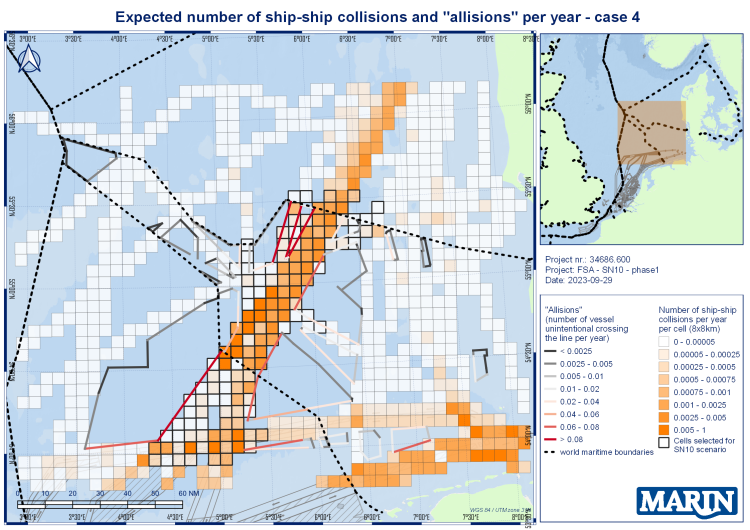
Results case 4.
Key findings and conclusions
Incident frequencies: The overall expected frequency of ship-ship collisions in the North Sea area, which includes the Dutch, German and Danish EEZs, was found to range between 2.5 and 2.7 collisions per year for the different scenarios evaluated. This analysis considered "route-bound" traffic, which does not include smaller vessels like fishing boats or work vessels. In addition, the expected number of “allisions” (collisions with stationary objects, such as wind turbines) was projected to range between 5.7 and 6.0 per year.
Impact of wind farms: The study concluded that the introduction of offshore wind farms would increase the frequency of allisions in the region. In 2022, some wind farms in the Dutch EEZ were already operational, and the estimated allision frequency for these wind farms was approximately 0.65 per year. With the planned expansion of wind farms across the Dutch, German and Danish EEZs, the total expected number of allisions was projected to rise by about 5 incidents annually.
Risk variability: While there were some differences between the results of the two modelling approaches (SAMSON and IWRAP), the overall pattern and relative risks across the different design cases were consistent. Both assessments showed that the difference in total risk between the various scenarios was relatively small, which suggests that no single wind farm layout (collection of different wind farms) was significantly safer than the others when looking at the overall effect on the North Sea. However, this underscored the importance of combining quantitative data with qualitative expert input to fully assess safety risks.
Results case 3.
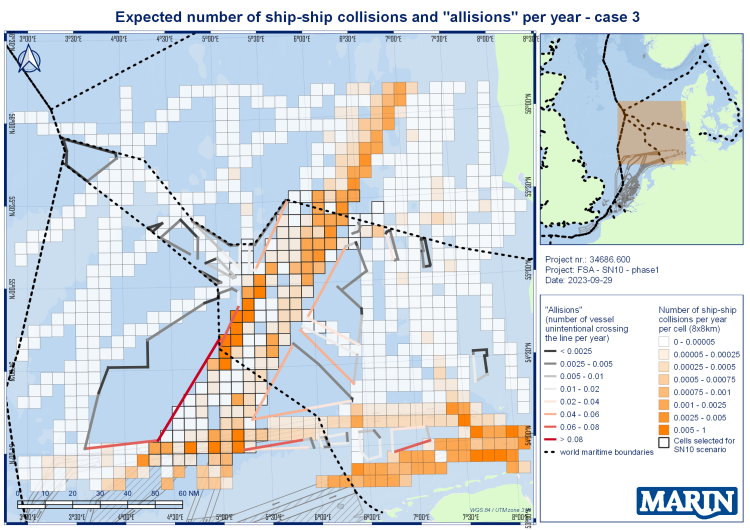
Qualitative Analysis: This component focused on the expert judgment and non-quantifiable aspects of the risk, such as environmental impacts and the potential consequences of accidents on ships, installations, and people. The qualitative analysis helped identify risks that were not easily measurable but were crucial for understanding the broader safety implications.
The combination of these two approaches allowed the project to capture both measurable risks and expert insights, enhancing the overall reliability of the safety assessment.
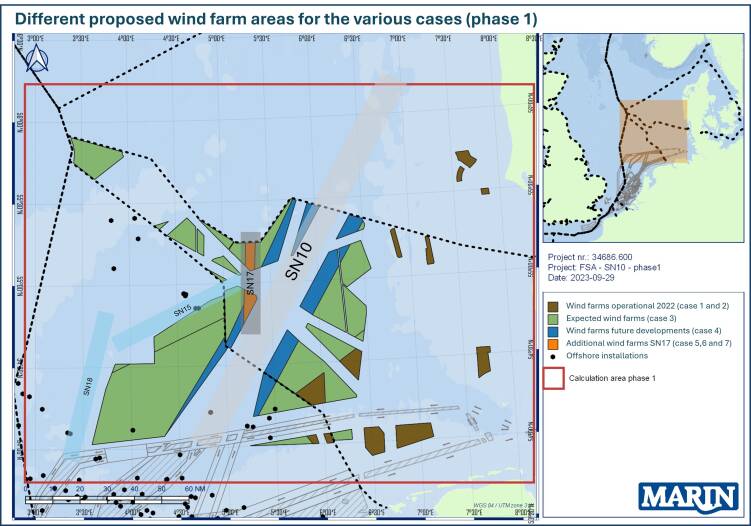
December 2024, no. 142
Quantitative and Qualitative Assessments
The assessment process combined two key types of analysis: quantitative and qualitative.
Quantitative Analysis: This involved modelling and the statistical evaluation of risks, including accident frequencies based on factors such as vessel density, weather conditions, and potential obstacles. MARIN used the SAMSON model, which has been in use by Dutch authorities for more than 30 years, while ABL Group used the IWRAP model, commonly applied by German authorities. Despite differences in the models' results, both models produced similar conclusions regarding the relative risks across various wind farm layout options.
Phase II (End of 2023 and 2024): This phase expanded the scope to assess the broader effects of wind farm configurations on shipping safety throughout the wider North Sea. It aimed to understand the overall impact of different offshore wind farm configurations on maritime navigation, particularly in terms of risk management for shipping vessels.
The study concluded that the introduction of offshore wind farms would increase the frequency of allisions in the region.

Interested? Contact us to discuss your options
Balancing offshore wind energy and
navigational safety in the North Sea
The SN10 route is a critical international shipping lane that connects the southern North Sea with the Skagerrak and Baltic Sea to the north. As more offshore wind farms are developed in the region, balancing the expansion of renewable energy with the need for safe and efficient maritime transport becomes increasingly challenging. To address these challenges, the Netherlands, Germany and Denmark initiated a collaborative project to perform a Formal Safety Assessment (FSA), in accordance with International Maritime Organization (IMO) guidelines, to evaluate the impact of wind farms on the SN10 route.
Formal Safety Assessment of the SN10 shipping route
The project was divided into two main phases:
Phase I (2023): Focused on a smaller area of the SN10, specifically the German Exclusive Economic Zone (EEZ) and its connection to existing traffic separation schemes in the Dutch EEZ. The goal of this phase was to analyse how narrowing the shipping route could impact navigational safety. One key conclusion was that narrowing, or "closing" certain parts of the route could potentially disrupt maritime traffic, leading to congestion on other major shipping routes outside the SN10 area. The need for further analysis across a broader area of the North Sea was identified.
Create a MARIN account to stay updated





Report
However, to fully capitalise on this potential, cooperation among the countries bordering the North Sea - particularly the Netherlands, Germany and Denmark - is essential. This collaboration is needed not only to boost renewable energy generation but also to safeguard maritime safety and ensure the continued accessibility of vital international shipping routes, such as the SN10 route.
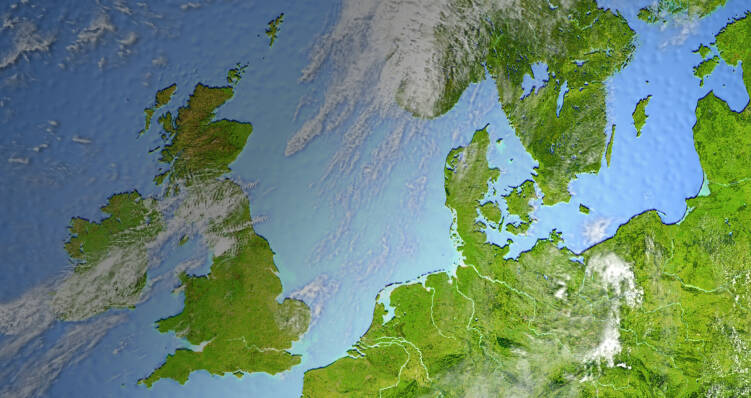
Offshore wind energy has become a crucial element in the global transition to sustainable energy, and the North Sea, with its consistent and strong wind resources, is considered a prime location for the expansion of wind farms.



